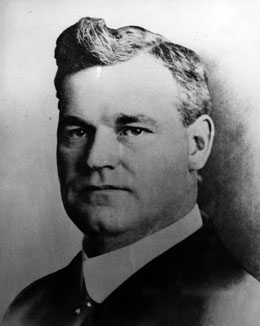On November 10, 1913, the 33rd annual convention of the American Federation of Labor (AFL) opens in Seattle, Washington. The opening ceremonies and speeches are attended by nearly 3,000 people at the Hippodrome on 5th Avenue and University Street. Speakers include Washington Governor Ernest Lister (1870-1919), Seattle Mayor George Cotterill (1865-1958), Washington State Federation of Labor President E. P. Marsh of Everett, and AFL President Samuel Gompers (1850-1924).
The AFL was a federation of craft unions, that is, unions organized on the basis of a particular skill, such as cigar maker, carpenter, or electrician. The exception was the United Mine Workers of America, the largest union in the AFL, which was an industrial union. An industrial union includes as members all the workers in a particular workplace, including various trades as well as unskilled workers.
Called to Order
The President of the Seattle Central Labor Council, T. H. Bolton, called the convention to order, and after the singing of the "Star Spangled Banner" and an invocation, the first speech was delivered by Washington Governor Ernest Lister (a former Iron Molder from Detroit).
There were 327 delegates to the convention. Among the many items of business were resolutions of support for two strikes, the Michigan Copper strike organized by the Western Federation of Miners, and the Colorado Fuel and Iron (coal) strike organized by the United Mine Workers of America. Another item was a resolution proposing the assessment of the membership of one cent to be used in organizing women wage workers.
AFL Opposition to Immigration
The theme of opposition to immigration recurred frequently during the convention and was the subject of a resolution. The AFL lobbied to have a literacy test added to the barriers to immigration to the United States. The convention also focussed on how employers were substituting machinery for hand labor. In the delegates' minds, the machinery question was connected to the immigration question.
The AFL was responding to the employer strategy of mechanizing production and replacing skilled craft workers (such as most members of the AFL) with unskilled (immigrant) labor. This momentous change in how production was carried out involved a shift in the location of the technical knowledge of how to produce. Before, the skilled worker possessed this knowledge (which he'd often learned from his father). Increasingly, professional managers organized production and directed the work of unskilled workers in doing it.
In 1913, unskilled immigrants were pouring into the United States especially from southern Europe and Italy.
Washington Governor Ernest Lister spoke to the convention opposing immigration, particularly the immigration of southern Europeans such as Italians. The Seattle Union Record reported on his speech as follows:
"The governor dwelt on the immigration problem that would confront labor in the Pacific coast states following the opening of the Panama Canal. In his opinion the immigration from the northern countries of Europe would work no hardship on the people already here — but many of those who would come from southern Europe would or could not assimilate with the people of this country" (Seattle Union Record, November 15, 1913, p. 8).
This prejudice against southern European immigrants was common in the labor movement. It would have been difficult for the delegates to oppose immigration from northern Europe since numerous members of their own esteemed organization, including AFL President Samuel Gompers (b. London, England) had emigrated from northern Europe.
Blethen's Controversial Invitation
Seattle Union Record reports on the convention contain hints of a conservative faction led by Gompers and a "progressive" faction of which the United Mine Workers delegate Duncan McDonald from Illinois was a prominent member. For example, a resolution was presented to the delegates to accept an invitation by Col. Blethen (1845-1915), owner of The Seattle Times, to tour the Bremerton Navy yard. According to the Seattle Union Record, "Duncan McDonald, a delegate from the United Mine Workers, vigorously opposed accepting the invitation, pointing out the attitude of the Times in times of trouble for workers." There was enthusiastic support of McDonald's point, but when "Delegate Listman," a member of the local arrangements committee, counseled acceptance, the vote was 152 to 32 in favor.
On Monday evening after the first day of the convention, union labor turned out for a ball sponsored by the Teamsters Union No. 174. Nine hundred couples attended, and they danced the night away.

